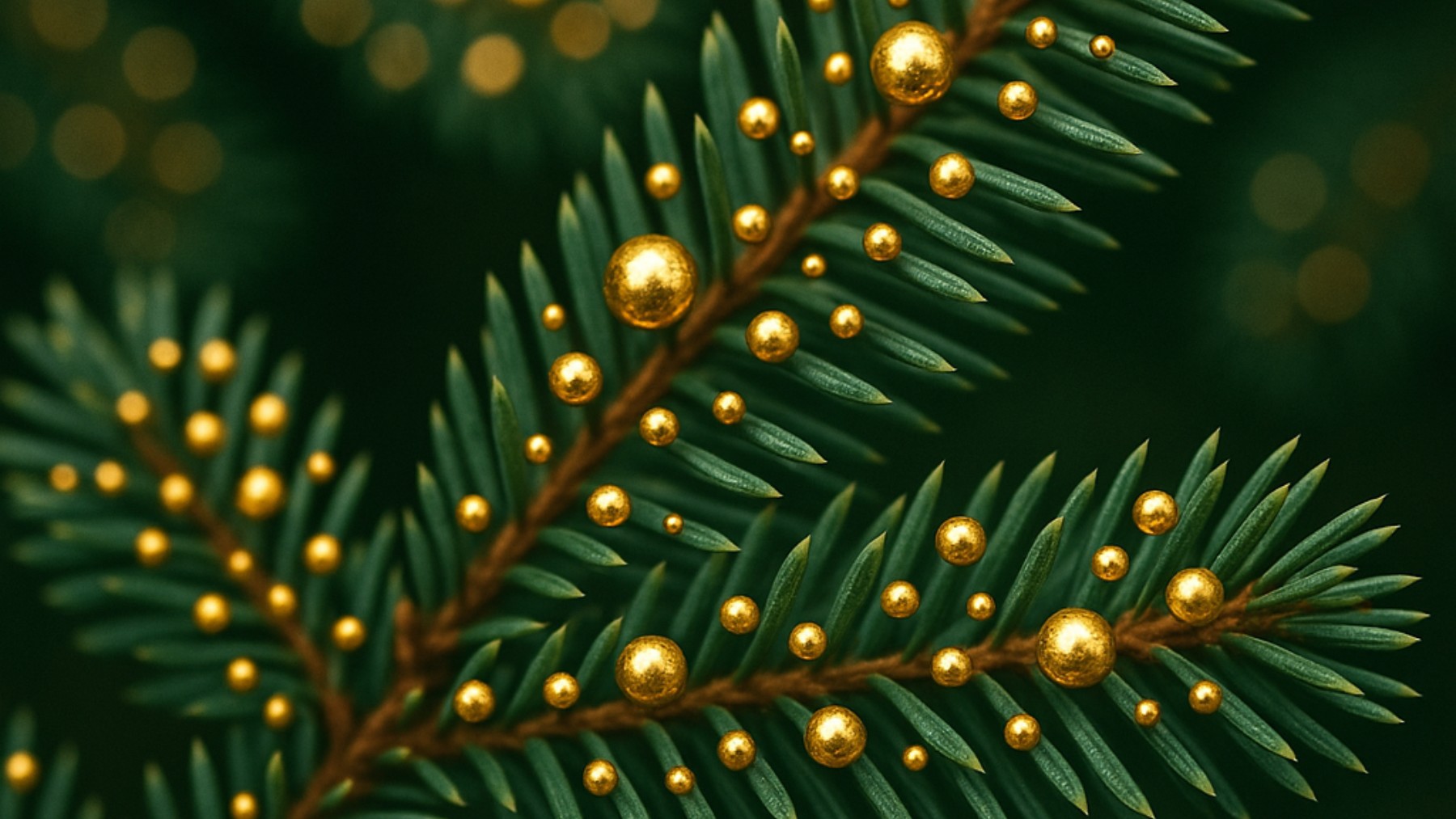Through a collaboration between the University of Oulu and the Geological Survey of Finland, a group of scientists has managed to identify gold in tree needles, as well as the bacteria involved in this process, and the potential use they could have in future studies. The discovery was made near the Tiara gold deposit, in a remote region of northern Finland. After taking a sample of 138 red spruce (Picea abies) residues from 23 different trees, they found in four of them the presence of gold nanoparticles inside the leaves. The gold was not found on the exterior, but was part of the internal structure of the leaf, surrounded by bacterial communities embedded in biofilm matrices.
After in-depth analysis, the scientists linked the bacteria Cutibacterium, Corynebacterium, and a still little-known one from the P3OB-42 group, to the presence of gold nanoparticles. They have explained that the presence of gold in the leaves is due to the biomineralization phenomenon carried out by microorganisms. Although the ability of plants to absorb metals through their roots is nothing new, this research has brought to light the possibility that it is the endophytes responsible for this process. According to scientists, this new approach could replace invasive mining with green mining, analyzing this new discovery that combines ecology, microbiology, geology, and nanotechnology.
Gold in the treetops of Finland
A collaboration between the University of Oulu and the Geological Survey of Finland has discovered something that almost seems straight out of a science fiction movie. Published in the journal Environmental Microbiome, it concerns the discovery of gold nanoparticles in tree leaves. More specifically, this finding took place near the Tiira gold deposit, in a remote region of Finland. 138 samples of Norway spruce needles (Picea abies) were taken from 23 trees.
After being analyzed microscopically using genetic sequencing techniques, gold nanoparticles were found in four of them. It is not a new discovery that plants have the capacity to absorb metals from the soil, but the mystery remains as to how they do it. The importance of this study lies in the fact that scientists have been able to focus on a group of bacteria called endophytes, which they believe are responsible for this process.
What data was obtained?
Endophytes are groups of bacteria that live harmlessly inside plants. They appear to be responsible for carrying out a biomineralization process, meaning they are in charge of transforming dissolved gold in soil water into solid nanometric particles. Additionally, they have been able to link the presence of gold with the appearance of bacteria such as Cutibacterium, Corynebacterium, and a still little-known member of the P3OB-42 group, which is credited with the ability to convert soluble gold into metallic solids within the tree.
What impact does this finding have?
What impact does this finding have?The usefulness of this information is incalculable. It’s not just about enhancing trees’ ability to absorb metals from the soil, which was already known. It’s also not significant in monetary terms, as the amounts of gold barely hold value, amounting to a total of 0.02 euro cents in gold per entire tree. The importance lies in how efficiently trees can carry out this process (so far inexplicable or with many gaps), and how it can become a key tool to replace traditional mining with green mining. This is a completely new approach that combines ecology, microbiology, geology, and nanotechnology.







